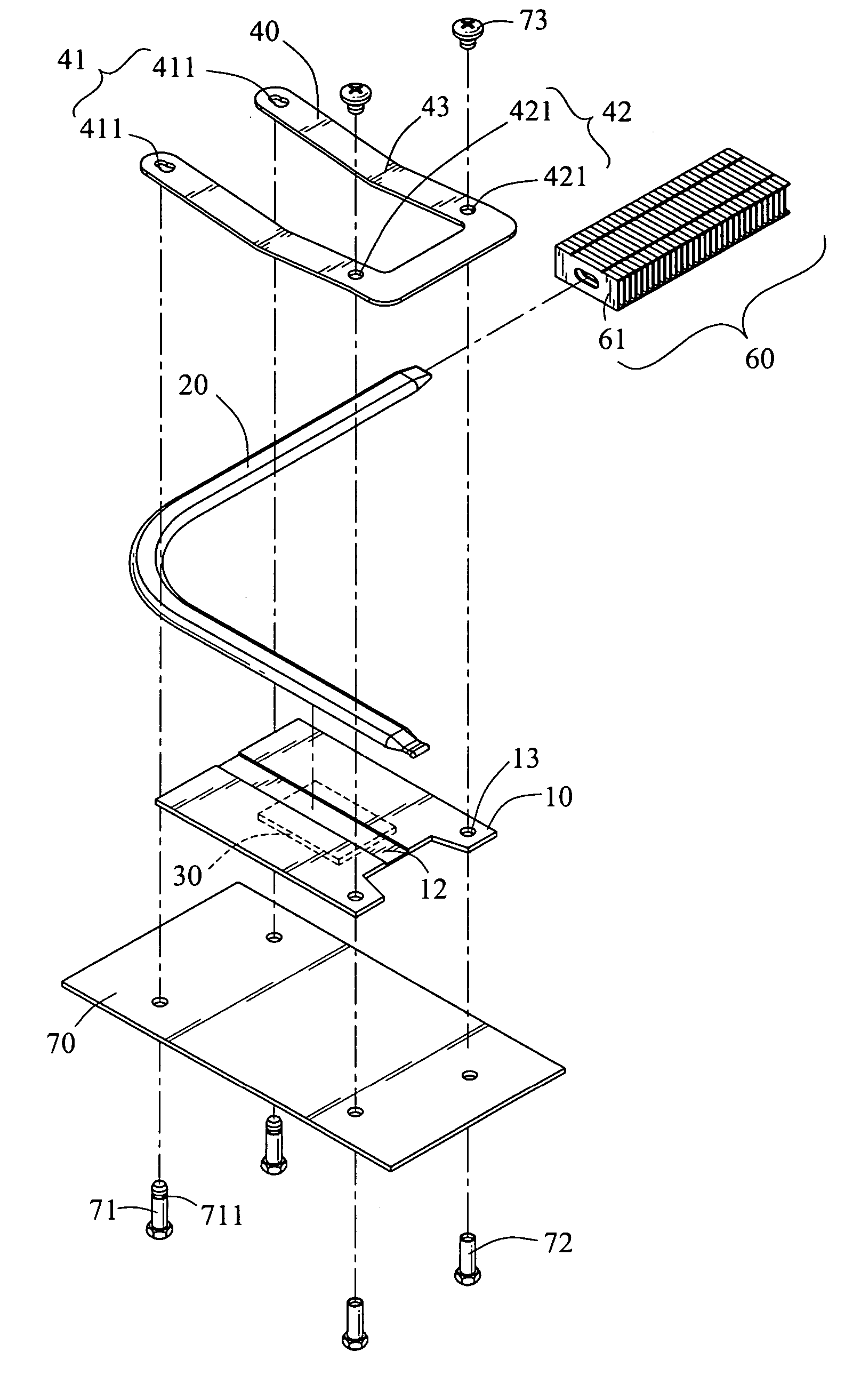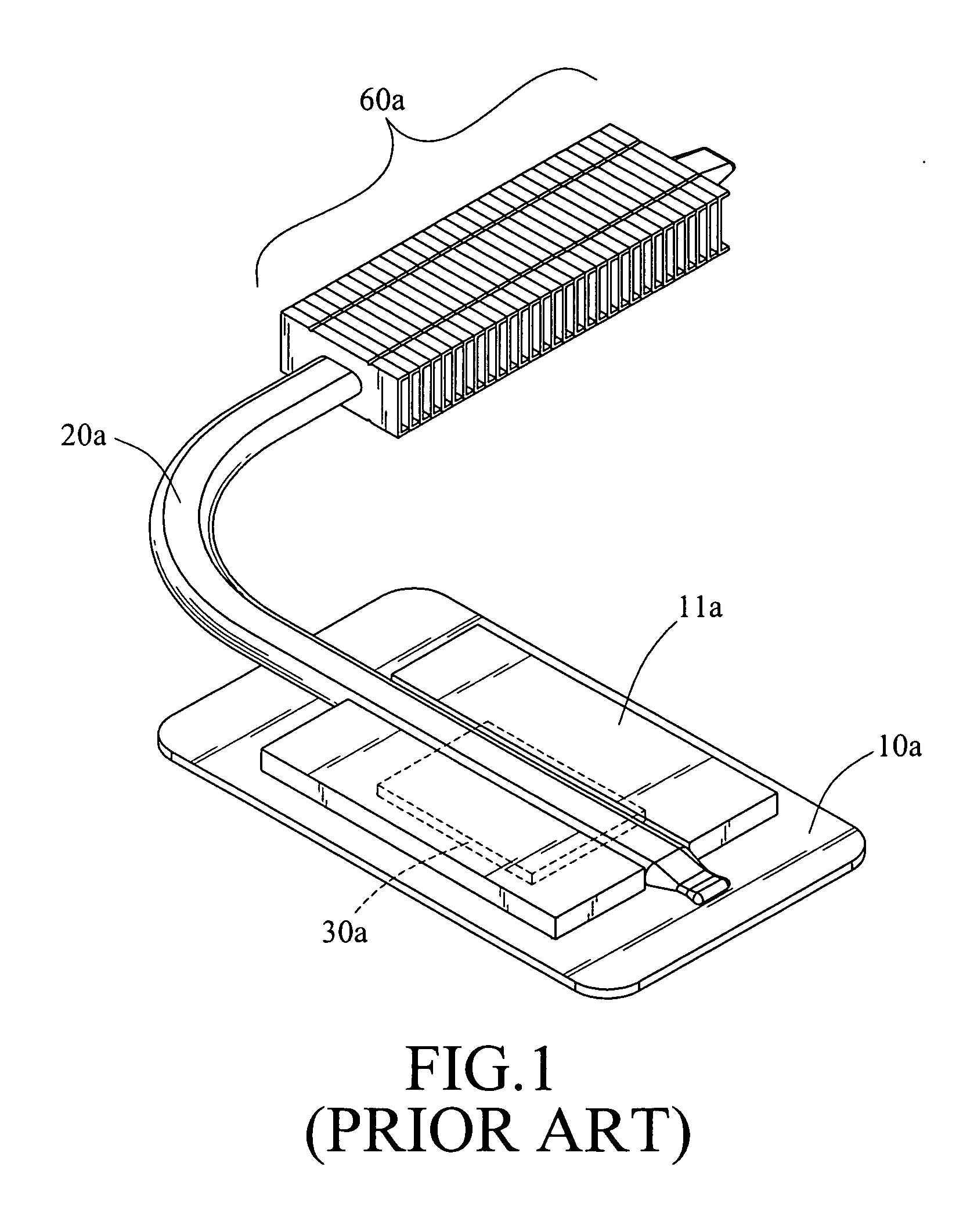Heatsink module of heat-generating electronic elements on circuit board
a technology of heat-generating electronic elements and circuit boards, which is applied in the direction of cooling/ventilation/heating modifications, semiconductor/solid-state device details, semiconductor devices, etc., can solve the problems of insufficient effective contact area between and dissipation efficiency, and achieve the effect of increasing the effective contact area, shortening the path, and increasing heat dissipation efficiency
- Summary
- Abstract
- Description
- Claims
- Application Information
AI Technical Summary
Benefits of technology
Problems solved by technology
Method used
Image
Examples
first embodiment
[0021] A heatsink module disclosed in the present invention refers to a heatsink module adapted to a Central Processing Unit (CPU) chip for performing computation but is not limited to the CPU chip. For example, an integrated circuit chip producing heat can also employ the technology disclosed in the present invention. In the following detailed description of the present invention, the CPU chip is illustrated as a most preferred embodiment of the present invention the present invention is shown in FIG. 2. The bottom surface of a heat-conducting substrate 10 contacts a CPU chip 30, and the top surface thereof is provided with a groove 12 for accommodating one end of a heat pipe 20, the other end of which is connected to a heatsink fin array 60 having a plurality of heatsink fins 61. In order to lock the heat-conducting substrate 10 by the spring fastening 40, a fastening portion 41 and a locking portion 42 of the spring fastening 40 should be aligned with a hook stud 71 and a screw s...
second embodiment
[0025] the present invention is shown in FIG. 6. When the two fastening holes 411 on the spring fastening 40 are buckled with the hook stud 71, the fastening portion 41 is attached with the heat-conducting substrate 10. And the pressing portion 43 is also pressed against the heat-conducting substrate 10, such that an angle is formed between the locking portion 42 and the heat-conducting substrate 10. As there is no perforation in the heat-conducting substrate 10, the screw studs 72 directly pass through the two screw holes 421 of the spring fastening 40, thereby the locking portion 42 is attached with the heat-conducting substrate 10, and the spring fastening 40 can provide a sufficient downward pressing force to the heat-conducting substrate 10.
PUM
 Login to View More
Login to View More Abstract
Description
Claims
Application Information
 Login to View More
Login to View More - R&D
- Intellectual Property
- Life Sciences
- Materials
- Tech Scout
- Unparalleled Data Quality
- Higher Quality Content
- 60% Fewer Hallucinations
Browse by: Latest US Patents, China's latest patents, Technical Efficacy Thesaurus, Application Domain, Technology Topic, Popular Technical Reports.
© 2025 PatSnap. All rights reserved.Legal|Privacy policy|Modern Slavery Act Transparency Statement|Sitemap|About US| Contact US: help@patsnap.com



